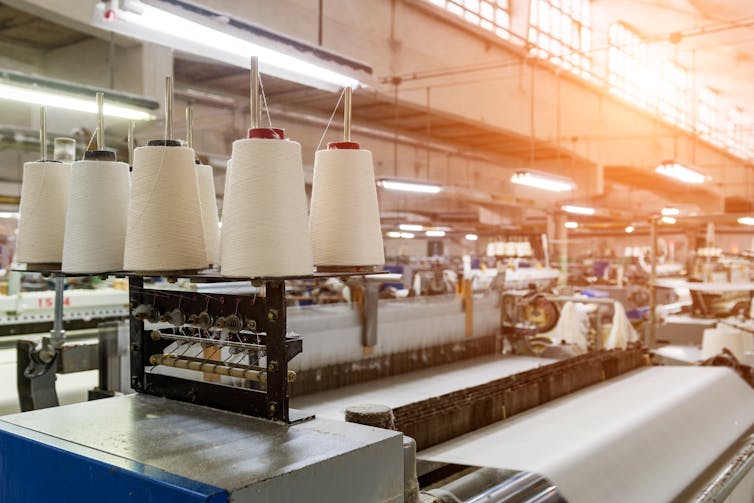
How to really hold business to account on their carbon footprint: include their supply chains
5 minute read

Donald Trump may not believe climate change is happening, but most business leaders do and it is no surprise to see it top of the agenda at the World Economic Forum in Davos.
Many firms and organisations are now working hard to reduce their carbon emissions. And it is not just good public relations. Pressure is building on firms to lead society in the move towards a sustainable future.
But still too few include their supply chain when considering their environmental impact and this is bad news for the environment. Supply chains contribute significantly to a firm’s carbon footprint and can amount to four times the organisation’s own operational emissions.
The Carbon Disclosure Project (CDP), a charity running the global disclosure system on carbon emissions for investors and other interested parties, found just 29% reported absolute decreases in emissions.
As well as being bad for the environment, this will increasingly cause problems for businesses too. A growing number of regulators worldwide now require publicly listed companies to include measurements of their greenhouse gas emissions in their annual reports. The UK introduced “streamlined energy and carbon reporting” in 2019. This includes supply chains.
Different levels of engagement
By analysing the CDP annual survey data from 2014 to 2017, my colleague Jens Roehrich and I found 1,686 listed companies from all over the world that were actively collecting environmental data and engaging with their supply chain.
Although two-thirds of our sample firms were not doing any of this, we can at least see that engaging with your suppliers is on the rise. The number of firms talking to some or all of their supply chain increased by 57% in the three years we looked at.
We were able to categorise the firms into three levels of activity: basic, transactional and collaborative. The basic level sees companies typically send their suppliers a survey to fill in on their emissions. US software firm Symantec produces an annual report on the greenhouse gas emissions of its suppliers, while Bank of America has done a CDP supply chain survey since 2009.
This is the first step for a comprehensive carbon reduction plan, measuring and collating data. More advanced firms are using that data more productively. At the transactional level firms are calculating their carbon footprint and identifying opportunities for improvements, providing their supply chain with targets and incentives.
The airliner Virgin Atlantic aims to reduce emissions from its supply chain each year. Meanwhile, nuclear power firm Exelon sets goals for its suppliers to reduce energy usage and greenhouse gas emissions.
This data is also being used by companies to develop key performance indicators. These can then be used to select a supplier or worked into contracts to assess a supplier’s performance. They can then send warnings to companies who are not achieving the required performance levels and demand improvements. For instance, pharmaceuticals company [Pfizer] benchmarks its suppliers on the basis of their greenhouse gas emissions and water consumption levels and demands corrective action when suppliers fall short of their targets.
At the collaborative level, firms are working with their suppliers to develop shared goals and values around sustainability. This means more direct conversations through meetings, seminars on best practices, as well as establishing online discussion groups designed to foster innovations that reduce their carbon footprint and create greener products and services.
Food multinational Kellogg’s has organised a Sustainability Consortium with its supply chain to advance scientific research and develop standards and tools that have the potential to improve the environmental, social and economic impacts of their products. Similarly, InterContinental Hotels Group is working with the International Tourism Partnership to reduce the environmental impact of the cotton used in its bed linen.

Hotels can consider the carbon footprint of how their linen is produced. Shutterstock
Firms at the collaborative level also seek to engage customers and consumers, persuading them, through marketing and public relations, of the benefits of new, greener products and how to use them in a way that is less harmful to the environment.
Chemicals company Ecolab partners with its customers to reduce their energy demands and carbon emissions through innovations. French hospitality firm Sodexo funds a professor of sustainable sourcing at the Euromed School of Management in Marseilles.
If firms have to report all their emissions, from the supply chain to the customer, then what each one does affects the other. This makes the collaborative approach increasingly important. Companies need to understand that they are all part of a system that has to work together, rather than use it as another supply chain management tool.
Tech leading the way
Measuring emissions across the whole value chain can be incredibly complex for a company like Walmart with its thousands of suppliers around the world. The amount of data involved is probably why we see tech companies leading the way in reducing their carbon footprint. Their data analytics skills mean it is natural for them to collate data and put it to good use and work up and down the supply chain.
Their experience of handling and managing data also means they see this trend and increasing requirement to record and measure emissions for companies as an opportunity. If they figure out and produce a comprehensive software package that does all this effectively, they can then sell that platform to other firms looking to manage their whole carbon footprint. Verizon, for example, now sees its Internet of Things products, designed to reduce carbon emissions, as a significant source of revenue opportunities.
Sustainability has become the issue of this generation. If businesses are to prosper in this climate, they need to include their whole supply chain to claim they are truly on the planet’s side and not be accused of creative carbon accounting.
This article was written by Frederik Dahlmann on The Conversation. Read the original version here.




